A stud finder is an essential tool that has revolutionized the construction and home improvement industry. This device is used to detect framing studs located behind the final walling surface, usually drywall. While it may seem like a simple tool, a stud finder plays a crucial role in ensuring the structural integrity of buildings and the safety of construction and DIY projects.
The purpose of this article is to provide an in-depth understanding of stud finders, their importance, types, and factors to consider when purchasing one. This guide will also delve into the technology behind stud finders, how to use them, common mistakes to avoid, and a review of top stud finder brands. By the end of this article, you will have a comprehensive understanding of stud finders and be able to make an informed decision when purchasing one.
Whether you are a professional builder, a home improvement enthusiast, or a homeowner who likes to take on DIY projects, understanding the importance of a stud finder and how to use it effectively can make a significant difference in your work.
Our Top Stud Finder Picks
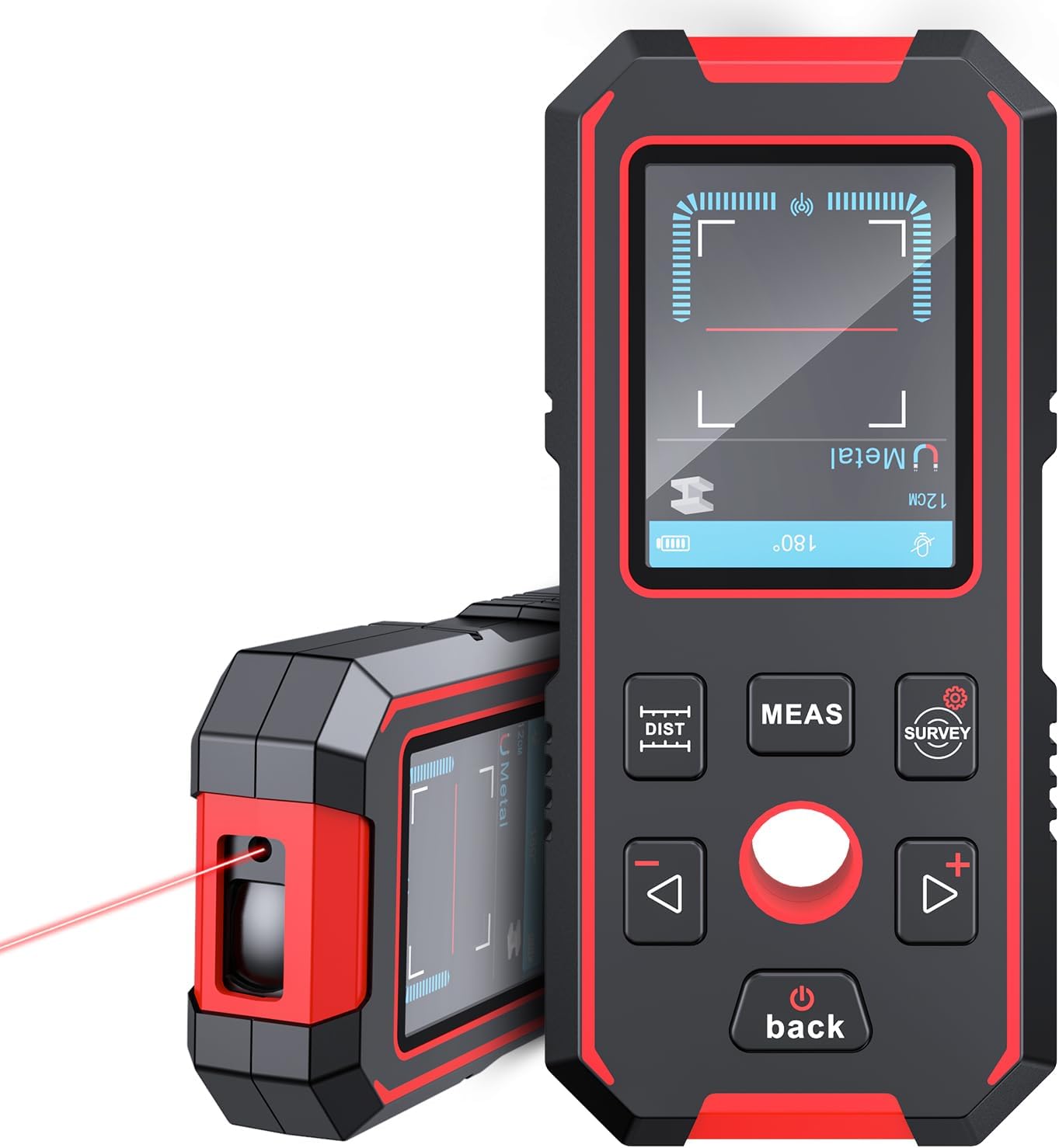
NOYAFA Stud Finder
Check on Amazon
Key Specs
- Detection Modes: Wood (1/2″, 1″, 1.5″), metal (up to 3.2 inches), AC live wires (up to 2 inches)
- Laser Measure: Up to 196 feet with multiple measurement modes
- Display: 2.4-inch LCD with backlight
- Battery: 390mAh rechargeable battery, Type-C charging
- Weather Resistance: IP54 rating, waterproof and durable
The NOYAFA NF-518S Stud Finder is a versatile and precise tool designed to make your work more efficient. With 3-in-1 multi-function detection, this tool not only locates concealed objects but also measures distances up to 196 feet, and provides digital level and angle measurements. It’s equipped with multiple scan modes for wood, metal, and AC wire detection, ensuring accurate results. The Type-C rechargeable design, combined with LCD backlighting, makes it user-friendly for continuous use. This stud finder also includes data storage and automatic calibration for added convenience.
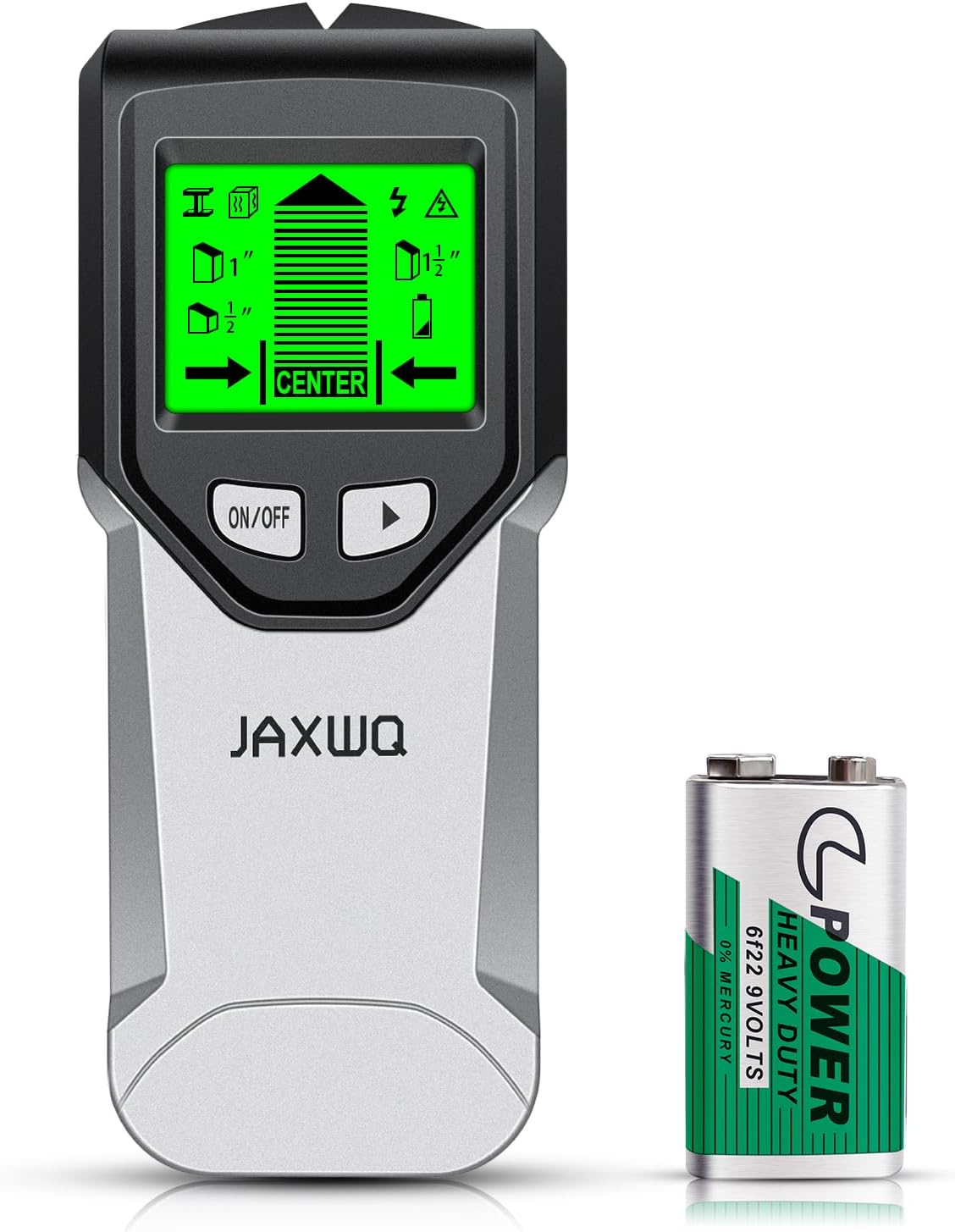
Stud Finder Wall Scanner
Check on Amazon
Key Specs:
- Scan Modes: Stud scan, deep scan, and metal scan for different materials
- Display: Bright backlit LCD for clear visibility in any light
- Detection: Accurate detection of studs, metal, pipes, and live AC wires
- Audio Alerts: Beep sound to guide location detection
- Uses: Ideal for hanging shelves, TV mounts, and preventing damage during installation
The Stud Finder Wall Scanner is an excellent tool designed for efficiency and safety, making it perfect for both professionals and DIY enthusiasts. Featuring an intelligent micro-sensor chip, it offers accurate and rapid detection of metal, studs, pipes, and live AC wires behind walls, ceilings, and floors. The backlit LCD display ensures clear visibility, even in low-light conditions, while audio alerts guide you precisely to the location of hidden objects. This tool is ideal for safely installing shelves, TV mounts, and other fixtures without causing damage.
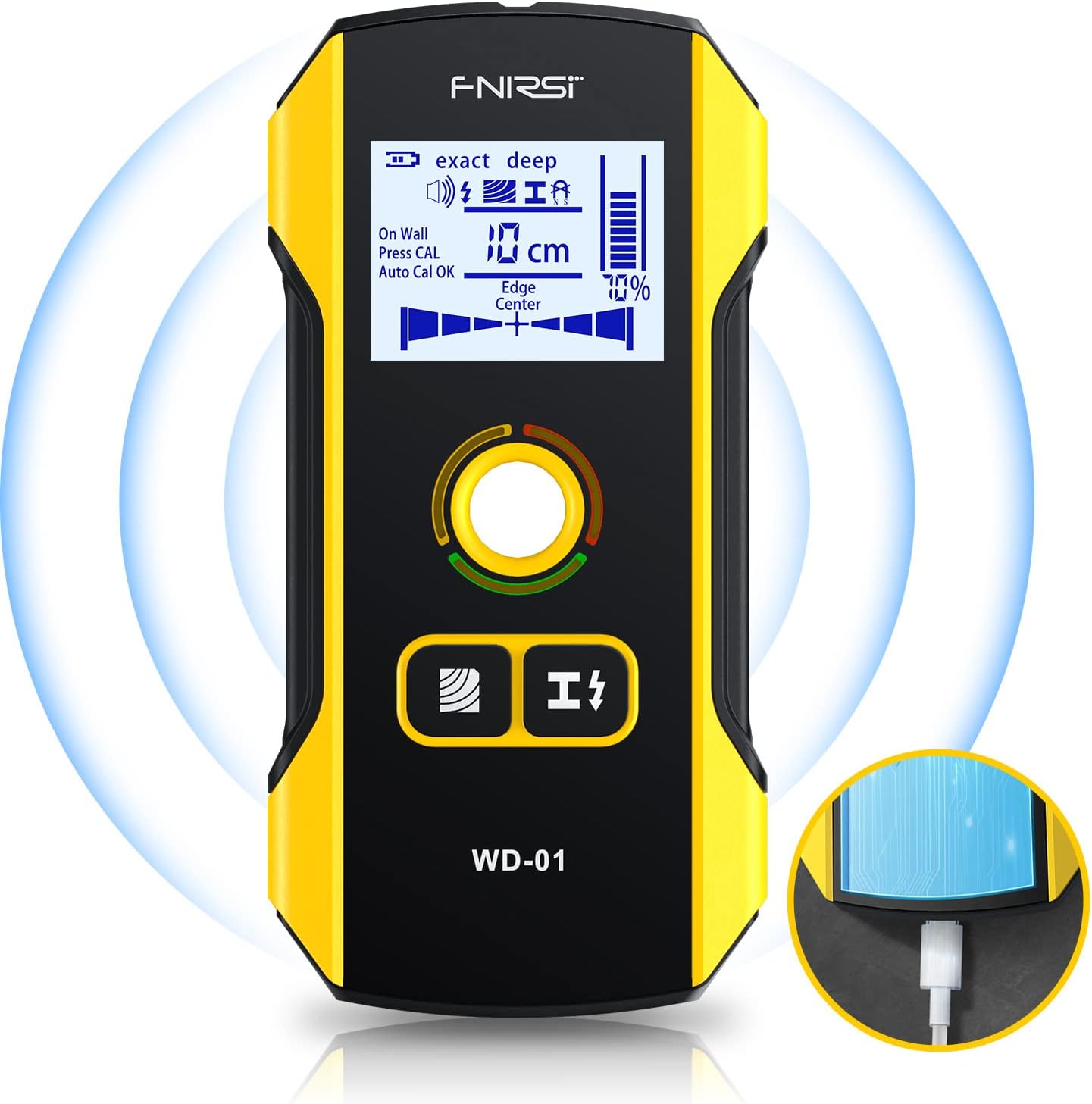
FNIRSI Stud Finder
Check on AmazonKey Specs:
- Detection Modes: 6-in-1: Wood, metal, AC wires, and copper wire scans
- Scan Depth: Up to 4.7″ for metal, 2″ for live wires
- Display: Clear LCD with easy-to-read interface
- Charging: Type-C charging for convenience
- Calibration: Automatic calibration for easy use on any wall surface
The FNIRSI Stud Finder offers a robust 6-in-1 detection capability that ensures quick and accurate scanning for studs, pipes, metal, and live wires behind walls, ceilings, and floors. With a newly designed positioning hole, it makes marking edges and centers of wood, metal, and copper studs more precise than ever. The LCD display and audio alarm system guide you effectively, while Type-C charging eliminates the need for battery replacements. It’s the perfect tool for home improvement and safety during installation projects.
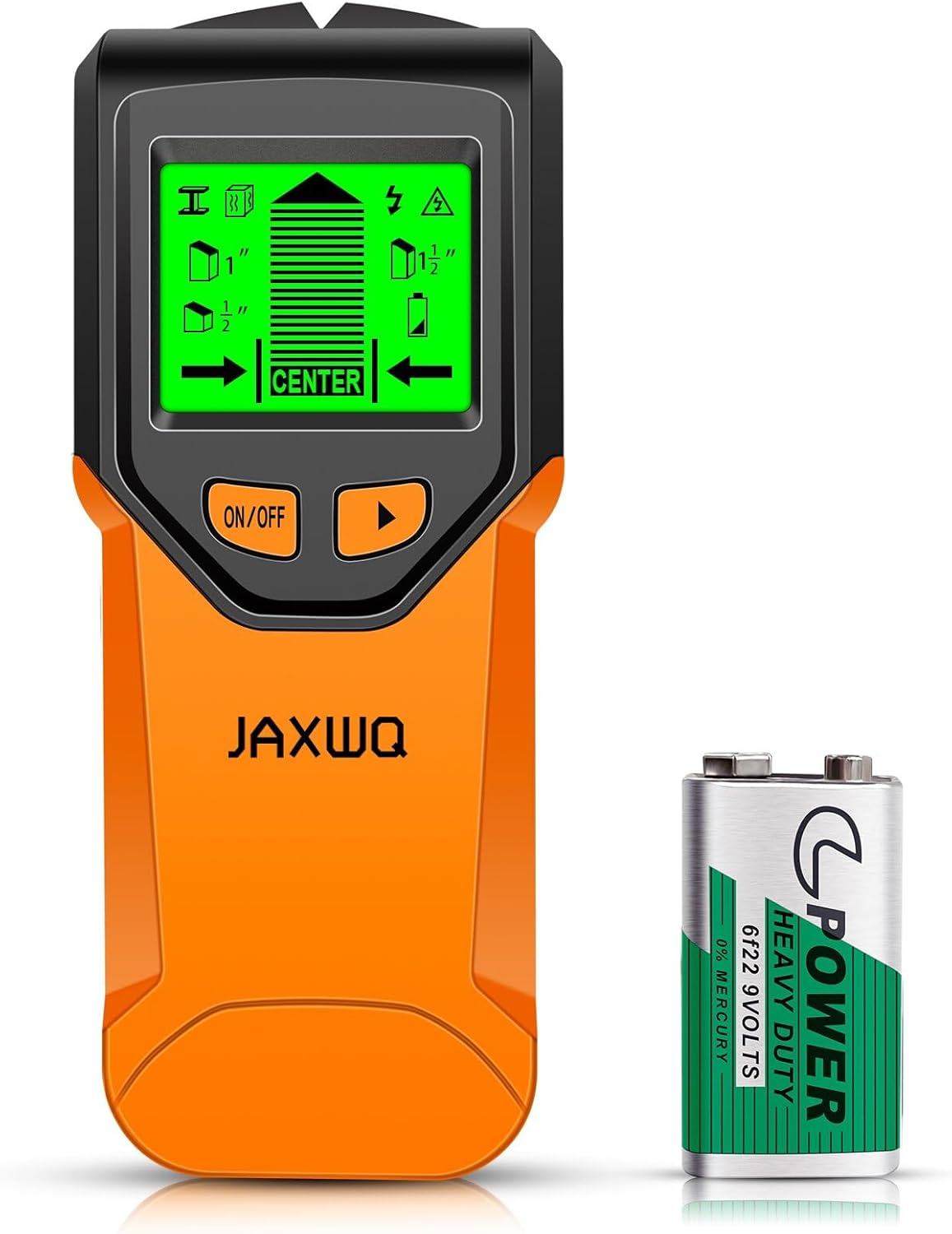
Stud Finder Wall Scanner – 5 in 1 Stud Finder Tool
Check on Amazon
Key Specs:
- Scan Modes: Stud scan, deep scan, metal scan
- Display: Backlit LCD with audio alerts
- Detection: Finds wood, metal, and live AC wires
- Use: Ideal for walls, floors, and ceilings
- Gift-Ready: Practical and thoughtful gift for home improvement tasks
The Stud Finder Wall Scanner is a must-have tool for professionals and DIY enthusiasts, offering 5-in-1 scanning capabilities to detect wood, metal, live wires, and more. With high sensitivity and rapid detection, it ensures accurate and quick location of studs, joists, pipes, and other hidden elements. The bright LCD display and audio alerts guide you to the exact location, making installation tasks easier. Multiple scan modes, including stud, deep, and metal scans, add versatility for a wide range of applications.
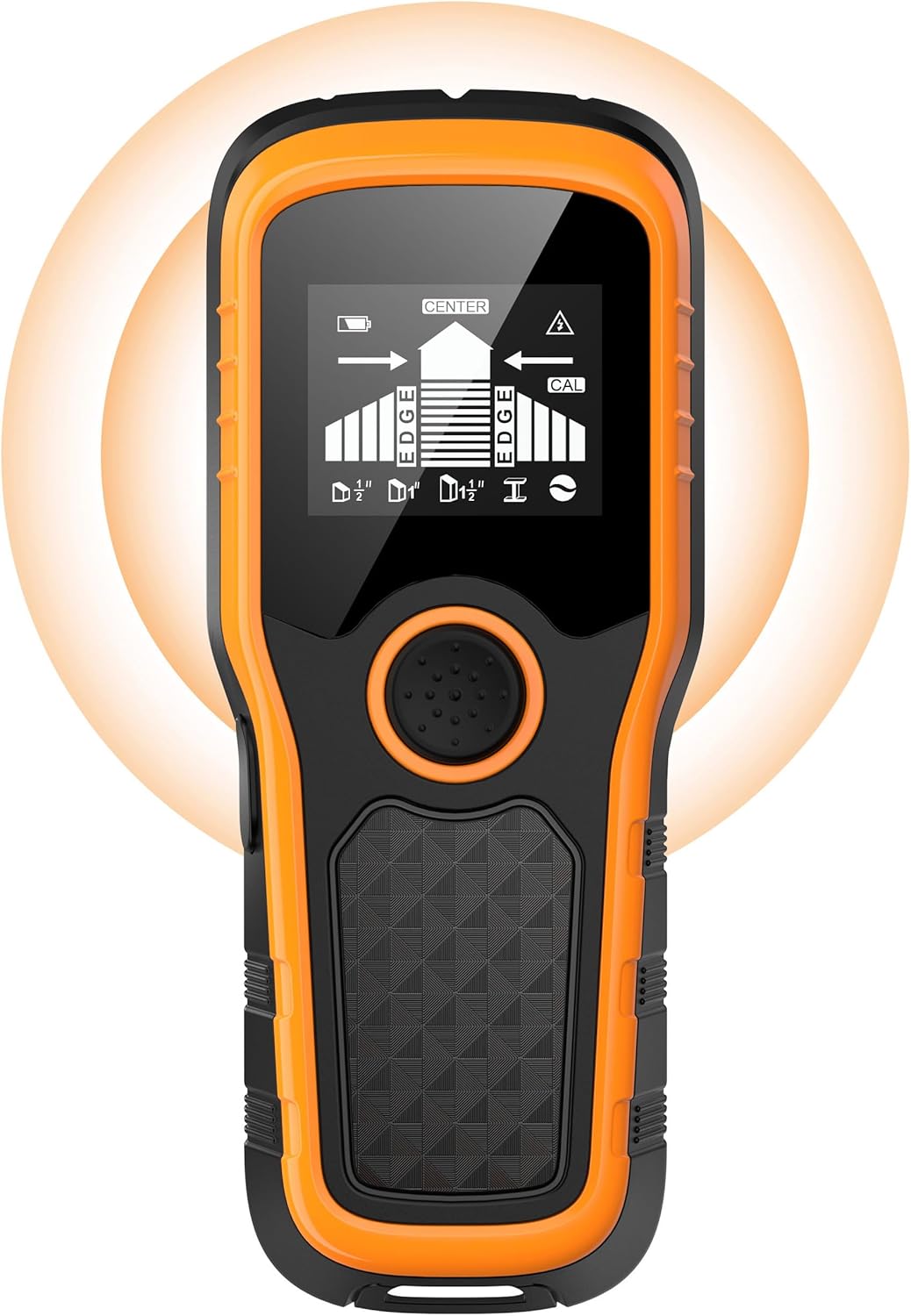
Stud Finder Wall Scanner 5-in-1 – Detector for Wood
Check on Amazon
Key Specs:
- Scan Modes: Stud scan, AC scan, metal scan
- Detection Depths: Studs up to 1.5″, AC wires up to 2″, metal up to 2.36″
- Display: Backlit LCD with audio alerts
- Calibration: Auto calibration for precise readings
- Safety: Live wire detection with indicator light
The Stud Finder Wall Scanner 5-in-1 is a highly efficient tool designed to detect hidden studs, metal, and live wires in walls, floors, and ceilings with pinpoint accuracy. Thanks to its advanced micro-sensor chip, it quickly and accurately finds edges and centers of metal, studs, joists, pipes, and electrical wiring. With multiple scan modes for various depths, including Stud Scan, AC Scan, and Metal Scan, it ensures the right detection for each task. The LCD display with backlighting and audio alerts guarantees easy use in low-light conditions. Plus, its live wire detection and automatic calibration features make it safe and reliable.
Understanding What a Stud Finder Is
A stud finder is a handheld device used to locate framing studs hidden behind the wall surface. In construction and home improvement, it’s crucial to know where these studs are. Whether you’re hanging a heavy picture, installing a new set of shelves, or putting up a new wall, you’ll need to make sure you’re drilling into a stud to ensure a secure hold.
Stud finders are essential tools in construction and home improvement because they take the guesswork out of finding studs. Without a stud finder, you run the risk of drilling into electrical wires or missing the stud entirely, which can lead to structural damage or a weak hold. Therefore, a stud finder is a must-have tool for any construction or home improvement project.
Stud finders come in various types, each with its unique features and functionalities. The three main types are magnetic stud finders, electronic stud finders, and radar stud finders. Each type has its pros and cons, which will be discussed in detail later in this article.
Types of Stud Finders
Magnetic stud finders are the simplest type of stud finders. They use magnets to locate metal within the wall, such as the nails or screws in the stud. While they are simple to use and don’t require batteries, they are not as accurate as other types of stud finders and can be influenced by other metal objects in the wall.
Electronic stud finders, on the other hand, use sensors to detect changes in the wall’s density. They are more accurate than magnetic stud finders and can typically detect both wood and metal studs. However, they can be more difficult to use and may require calibration.
Radar stud finders are the most advanced type of stud finders. They use radar pulses to detect the location and depth of studs, pipes, and wires within the wall. While they are the most accurate and versatile type of stud finder, they are also the most expensive.
Factors to Consider When Buying a Stud Finder
When buying a stud finder, the first factor to consider is accuracy. The primary purpose of a stud finder is to accurately locate studs within the wall. Therefore, it’s crucial to choose a stud finder known for its accuracy. Reading reviews and product descriptions can help determine the accuracy of a stud finder.
The ease of use is another important factor to consider. Some stud finders require calibration and can be difficult to use, especially for beginners. Choose a stud finder that is easy to use and has clear instructions.
Additional features, such as the ability to detect live wires or deep scanning capabilities, can also be beneficial. However, keep in mind that more features often mean a higher price. Therefore, consider your budget and only choose a stud finder with features that you need.
Detailed Analysis of Stud Finder Types
Magnetic stud finders are simple, inexpensive, and don’t require batteries. However, they are not as accurate as other types of stud finders and can be influenced by other metal objects in the wall. They are best for simple tasks where precision is not crucial.
Electronic stud finders are more accurate and can detect both wood and metal studs. However, they can be more difficult to use and may require calibration. They are best for more complex tasks where accuracy is important.
Radar stud finders are the most accurate and versatile type of stud finder. They can detect the location and depth of studs, pipes, and wires within the wall. However, they are also the most expensive. They are best for professional use or complex DIY projects where precision and versatility are crucial.
Understanding the Technology Behind Stud Finders
Magnetic stud finders work by using magnets to locate metal within the wall. When the magnet inside the stud finder is close to a metal object, such as a nail or screw in a stud, it will pull towards the wall, indicating the location of the stud.
Electronic stud finders work by detecting changes in the wall’s density. They use sensors that measure the capacitance of the wall. When the sensor is over a stud, the capacitance is lower, indicating the location of the stud.
Radar stud finders use radar pulses to detect the location and depth of objects within the wall. The radar pulses are emitted from the stud finder and bounce back when they hit an object. The time it takes for the pulse to bounce back is used to determine the location and depth of the object.
How to Use a Stud Finder for Accurate Wall Detection
Using a stud finder is relatively straightforward, but it does require some practice to get accurate results. The first step is to calibrate the stud finder. This is usually done by placing the stud finder on the wall and turning it on. The stud finder will take a few seconds to calibrate itself to the density of the wall.
Once the stud finder is calibrated, slowly move it across the wall. When the stud finder detects a stud, it will usually indicate this with a light or sound. Mark the location of the stud with a pencil.
For accurate detection, it’s important to move the stud finder slowly and to calibrate it every time you use it. It’s also a good idea to double-check the location of the stud by finding it from both directions.
Common Mistakes When Using a Stud Finder
One common mistake when using a stud finder is moving it too quickly. This can cause the stud finder to miss the stud or give inaccurate results. Always move the stud finder slowly and steadily across the wall.
Another common mistake is not calibrating the stud finder. Calibration is crucial for accurate results. Always calibrate the stud finder according to the manufacturer’s instructions before using it.
Finally, don’t rely solely on the stud finder. Always double-check the location of the stud by finding it from both directions. And remember, stud finders are tools to help you find studs, but they are not infallible. Always use caution when drilling into walls.
Reviewing Top Stud Finder Brands
There are many brands of stud finders on the market, each with its unique features and benefits. Some of the top brands include Zircon, Franklin Sensors, and Bosch.
Zircon stud finders are known for their accuracy and ease of use. They offer a range of stud finders, from basic models to more advanced ones with features like deep scanning and live wire detection.
Franklin Sensors is another top brand, known for their innovative stud finders with multiple sensor points for accurate detection. Their stud finders also have a large LED display for easy reading.
Bosch is a well-known brand in the tool industry, and their stud finders are no exception. They offer a range of stud finders, from basic models to advanced ones with radar technology for accurate detection and depth reading.
Conclusion
Choosing the right stud finder can make a significant difference in your construction or home improvement project. By understanding what a stud finder is, the different types, and how they work, you can make an informed decision when purchasing one.
Remember, the best stud finder for you depends on your needs and budget. Whether you choose a simple magnetic stud finder for occasional use or a high-tech radar stud finder for professional use, the most important thing is that it meets your needs and provides accurate results.
This guide has provided you with all the information you need to choose the right stud finder. Now it’s up to you to make the decision. Happy building!
FAQ
What is a stud finder?
A stud finder is a handheld device used to locate framing studs hidden behind the wall surface.
Why is a stud finder important?
A stud finder is important because it helps ensure the structural integrity of buildings and the safety of construction and DIY projects by accurately locating studs within the wall.
What are the different types of stud finders?
The three main types of stud finders are magnetic stud finders, electronic stud finders, and radar stud finders.
What factors should I consider when buying a stud finder?
When buying a stud finder, consider factors such as accuracy, ease of use, additional features, and price.
How do I use a stud finder?
To use a stud finder, first calibrate it according to the manufacturer’s instructions. Then, slowly move it across the wall. When the stud finder detects a stud, it will usually indicate this with a light or sound. Mark the location of the stud with a pencil.
